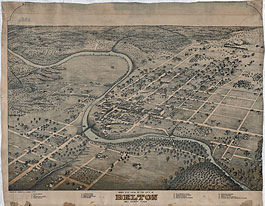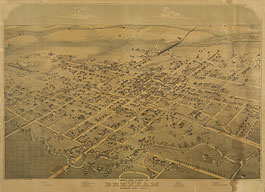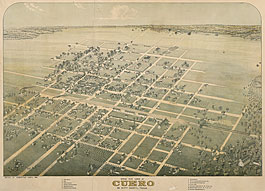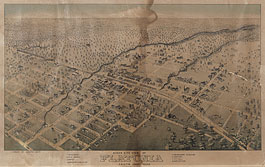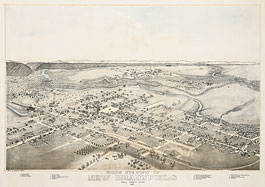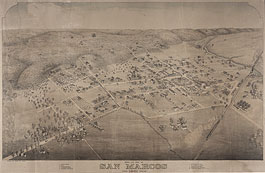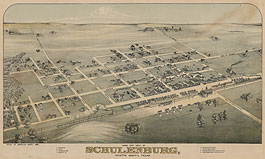Belton in 1881
Located on Nolan Creek, a tributary of the Leon River, Belton, the county seat of Bell County, was a small town of fewer than 1,800 persons when Koch visited in 1881. But the town was already rebounding from the economically disastrous years of the Civil War and a terrible fire of the year before that had destroyed much of the downtown area. The nearby Chisholm Trail, which ran along… [More]
Brenham in 1881
The Brenham that Koch depicted in 1881 had been rebuilt since the disastrous 1873 fire had destroyed much of the downtown area, and the railroad had enlarged Brenham’s trade area and stimulated its growth, including a significant immigration from Germany. Between June 1878 and June 1879, for example, more than 100 new houses were built within the city limits, and new businesses and churches were established to serve the… [More]
Cuero in 1881
Cuero in 1881 was the center of a region of small farmers who raised cotton, corn, sweet potatoes, and livestock. Although there had been a village known as Cuero as early as 1846, the present site of the city was established when the Gulf, Western Texas and Pacific Railway arrived from Indianola and Victoria en route to San Antonio in 1873, and the county seat was relocated from nearby… [More]
Flatonia in 1881
The area around Flatonia was settled by Anglo-Americans prior to the Civil War, but inexpensive land gradually brought German, Bohemian, Greek, Arabian, and Italian immigrants into the region. The city itself was created by the Galveston, Harrisburg and San Antonio Railway as it built west through Fayette County from Schulenburg in April 1874. Residents of old Flatonia, one mile southeast of the new site, and Oso, three miles northeast… [More]
New Braunfels in 1881
In depicting New Braunfels, founded in 1845 under the auspices of the Adelsverein (also known as the Society for the Protection of German Immigrants in Texas), Augustus Koch chose the perspective from the Sophienburg (Fort Sophia), the headquarters that Prince Solms-Braunfels established for the colony. Built on a hill on the south side of the new settlement with a view of the Comal River and its confluence with Comal… [More]
San Marcos in 1881
San Marcos was still a small, country town when Augustus Koch documented it in December 1880 shortly after the International-Great Northern Railroad, shown on the right-hand side of the print, connected it with Austin and San Antonio. Anglo-American settlers had arrived at the site in the 1840s, and the city had developed as a regional milling and ginning center. Cattle and cotton had become its main products by 1870… [More]
Schulenburg in 1881
Schulenburg, located in southern Fayette County about eighteen miles south of La Grange, was a small town of fewer than 1,000 persons when Koch visited in 1881. It had been founded in 1873, when the Galveston, Harrisburg and San Antonio Railway built through that portion of the county, and was settled by German, Austrian, and Czech immigrants whose presence is documented in some of the street names such as… [More]











